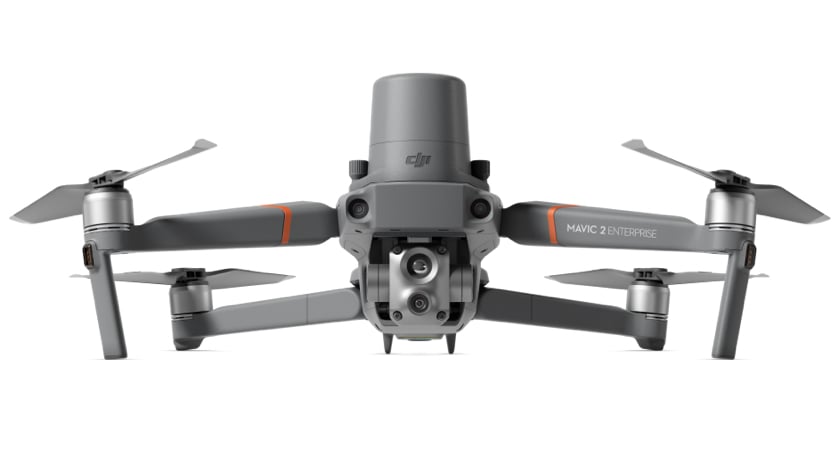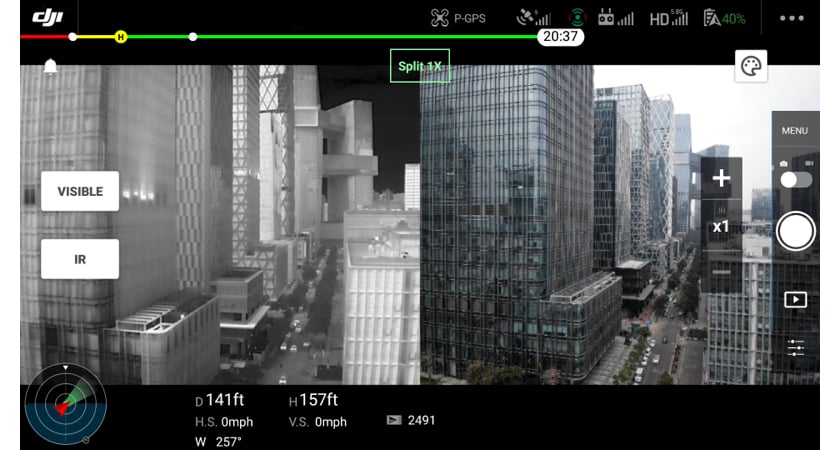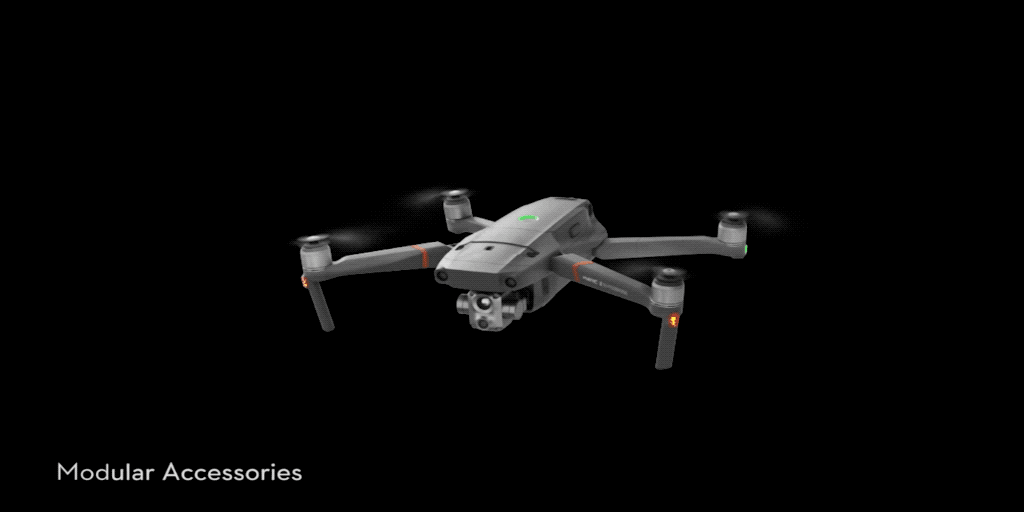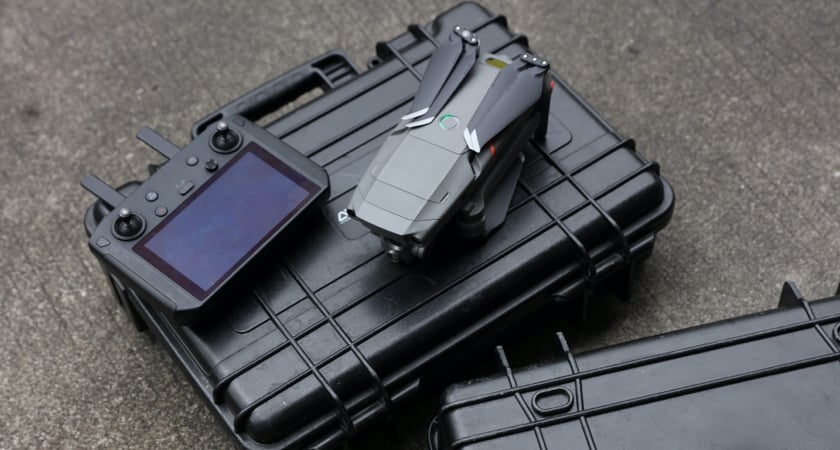With 2020 firmly behind us, it’s time to start looking to the future and what better way to start than with the launch of the Mavic 2 Enterprise Advanced (M2EA). That’s right, the Mavic Series is back and this time better than ever with the M2EA bringing a host of new features and performance upgrades.
With everything you’d expect from the Mavic family; reliable flight times, a solid battery life, and powerful modules all packed into a compact, sleek design with foldable arms for easy deployment, the M2EA has also received some serious enhancements that take the entire series to the next level. This includes huge upgrades to the thermal and visual cameras alongside the addition of an RTK module that enables vastly superior real-time positioning precision.

In this article, we take a look at the top 5 features that are making the M2EA the new standard for small commercial thermal drones.
Upgraded Thermal Imaging Drone Capability
With its new improved thermal sensor, the M2EA packs a whopping 640x512 thermal resolution at a 30 Hz frame rate letting you see in more detail than ever before. Compared to its predecessor’s resolution of just 160×120, this is an enormous upgrade making it one of the most advanced compact thermal drones ever to hit the market.
In recent years, thermal imaging drones have become indispensable for public safety workers the world over operating in a range of scenarios from firefighting missions in Chernobyl to super-sized solar plant inspection drones in Brazil.
The latest upgrade for the M2EA also includes a powerful 16x Zoom giving operators an unprecedented level of detail while Dual Vision mode means users can quickly switch between thermal, visual, or split-view feeds to help spot critical details during operations.

This increase in thermal imaging capacity alone raises the industry bar for compact thermal drones but, as if that wasn’t enough, the M2EA also comes with a host of additional enhancements.
Massive 48 MP Visual Camera
The M2EA sports a massive 48 MP visual camera compared to the 12MP of its predecessor. This is a huge upgrade. Maximum image size has increased to 8,000 x 6,000 and, with a 1/2-inch CMOS sensor alongside a mammoth 32x Digital Zoom, this is quite literally one of the most powerful cameras ever seen on such a lightweight aircraft. Coupled with the M2EA’s thermal capabilities, this provides some of the most accurate and detailed imaging on a commercial drone of this size.

Advanced RTK Module
With the inclusion of the new RTK module, the M2EA is capable of centimeter-level positioning accuracy. Real-Time Kinematics or RTK is a highly sought-after advanced satellite positioning technique. Deployed on the M2EA, it is used to combine and contrast position data captured from virtual and physical base stations, correcting the drone’s camera location in real-time with centimeter level precision.
If the RTK module wasn’t enough, the M2EA also features the return of all the other interchangeable modules from its predecessor including;
- Powerful spotlight with 11lx light intensity at 30m
- Advanced 100db loudspeaker
- Visibility beacon with up to 5km range

Enhanced Waypoint Missions
The M2EA’s waypoint system has been revamped to allow for an enormous 240 waypoints. Coupled with the RTK module, this makes it one of the most advanced compact inspection drones to date. The enhanced waypoint system enables operators to automate routine flight routes that capture identical data points every flight, automatically capturing visual or thermal images, as necessary.
Coupled with the RTK module, this makes routine inspection flights both more accurate and simpler to execute with waypoint missions able to be conducted in highly complex environments with the M2EA automatically adjusting for obstacles.
Faster Take-Off Speeds
The Mavic 2 Enterprise series has always been the drone of choice for those who require rapid deployment. With the M2EA, a trained operator can unpack, prepare, and take off in under a minute. Maximum ascent speed has been pushed to 6 m/s meaning the M2EA can arrive on scene and provide aerial awareness faster than ever. Max descent speed has also been increased to up to 5 m/s meaning the M2EA can return to home faster, saving battery and time.

Conclusion
Lightweight, portable, and reliable, the M2EA offers everything you’d expect from the Mavic series alongside a host of massive upgrades. The boost in both thermal and visual cameras alone raises the bar for commercial thermal drones, however, with the inclusion of the RTK module and enhanced waypoint missions, the M2EA reaches a whole new level.
The same size and weight as its predecessor, the M2EA nonetheless is faster, more powerful, more accurate, and packs in more advanced technology. Make no mistake, the M2EA is the new standard for small commercial drones.




.png?width=300&name=FH2%20update%20(1).png)
-1.png?width=300&name=HS%20-%20Featured%20Images%20(3)-1.png)
